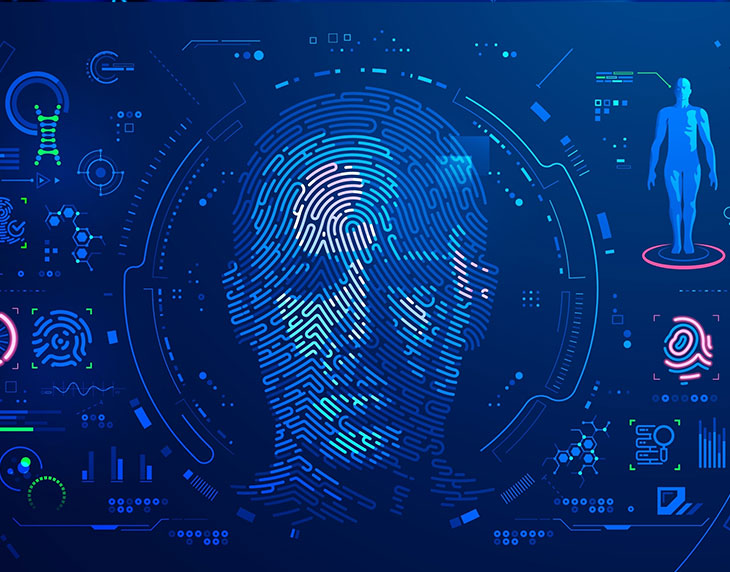Free Information Security Course with Certificate
Introduction to Information Security
Enrol for this comprehensive and hands-on free online training to master information security fundamentals. Led by our experts, this course covers various topics, including different breach types, in-depth hashing and more!
Instructor:
Mr. Neil DaswaniAbout this course
In this course, we will explore the world of information security and equip you with the essential knowledge to protect digital assets. We'll dive deep into real-world breaches, studying their implications and understanding how attackers operate. From the notorious Yahoo, OPM, Anthem, and JP Morgan Chase, to the infamous Target breach, we'll analyze the attacker lifecycle and the key attack vectors employed. You'll learn about effective defense strategies through a holistic defense-in-depth approach. We'll cover the Security Score Card, password breaches, and how to store and hash passwords securely. Ever wondered why custom hardware is faster? We'll uncover its reasons and explore better hashing approaches like Ballon Hashing.
We'll also delve into advanced topics such as Control Flow Integrity and Cryptographic Control Flow Integrity, providing insights into protecting software from malicious manipulation. Throughout the course, we encourage your participation in Q&A sessions to address any doubts. We'll also discuss the wide-ranging applications of computer security and explore its exciting future.
After this free, self-paced, beginner-level guide to Information Security, you can enroll in the Cyber Security courses and embark on your career with the professional Post Graduate certificate and learn various concepts in depth with millions of aspirants across the globe!
Course outline
Attacker Lifecycle
This section shall briefly discuss a hacker's life cycle and its different stages and then explain the traditional approach they use in this section.
Yahoo Breach
This section discusses a Yahoo breach case study and encloses the figures on what got stolen, its impact, approach, and the root cause for the breach.
OPM Breach
This section discusses the Office of Personnel Management breach case study and encloses figures and statistics on what got stolen, its impact, approach, the root cause, and the way through which the breach could have been prevented.
Anthem Breach
This section discusses the Anthem breach case study and encloses figures and statistics on what got stolen, its impact, approach, the root cause, key vulnerabilities, and the way through which the breach could have been prevented.
JP Morgan Chase Breach
This section discusses the JP Morgan Chase breach case study, and encloses figures and statistics on what got stolen, its impact, approach, the root cause, key vulnerabilities, and the way through which the breach could have been prevented.
Target Breach
This section discusses the Target breach case study, and encloses figures and statistics on what got stolen, its impact, approach, the root cause, and the way through which the breach could have been prevented.
Key Attack Vectors & Defenses
This section points to the attack vectors such as phishing, malware, and cookie generation and addresses the corresponding defenses.
Holistic Defense-In-Depth Approach
In this section, you will understand the importance of preventing the breach from happening and also learn the follow-up process in case it does.
Security Score Card
Security Score Card is an information security company that evaluates and rates the Cyber Security postures of third-party companies.
Password Breaches
This section explains password breaches and points to LinkedIn, Twitter, Evernote, Adobe, and PwdMgr examples for your understanding.
How to Store Passwords
This section gives you tips on where and how to store your data and enlightens you on what not to do while storing passwords.
How to Hash?
This section demonstrates a popular case study on how LinkedIn password management failed and explains the hash function to counter the attack.
Why is Custom Hardware Faster?
This section briefs the architecture of a part of the CPU used to hash and explains the technique that can be used to strengthen processing speed.
Better Hashing Approach
One of the better hashing approaches is the Scrypt hash function.
Ballon Hashing
This section begins with explaining the properties of hashing and then continues with a briefing on Ballon hashing along with the code demonstration.
Control Flow Integrity
This section defines control flow integrity, explains its purpose, and demonstrates a code to help you understand working to protect indirect calls with CFG.
Cryptographic Control Flow Integrity
This section explains a threat model and an approach called Cryptographic Control-Flow Integrity to control integrity.
Q/A
The speaker answers various questions in this module to make it interesting.
Computer Security - Its applications and its future
You will learn various applications of computer security along with its future scope.
Get access to the complete curriculum once you enroll in the course
Our course instructor

Mr. Neil Daswani
<p>Co-Director</p><p>Stanford Advanced Security Certification Program</p>
Cyber Security Expert
Frequently Asked Questions
Will I receive a certificate upon completing this free course?
Is this course free?
What prerequisites are required to learn the Introduction to Information Security course?
Introduction to Information Security is a beginner-level course, and you can start with the course without any prerequisites. So enroll today and start learning.
Will I have lifetime access to this free course?
Yes, once you enroll in this Information Security course, you will have lifetime access to this Great Learning Academy's free course. You can log in and learn at your leisure.
What are my next learning options after completing this Introduction to Information Security course?
Once you complete this free course, you can opt for a PostGraduate Program in Cyber Security that will aid in advancing your career growth in this leading field.
Is it worth learning about Information Security?
Yes, it is beneficial to learn Information Security. It protects an organization's ability to function, enables safe application operation implemented on IT systems, protects data collected from the users, and safeguards the technology within the organization.
What is Information Security used for?
Information security protects sensitive data from unauthorized access and activities, including inspection, modification, recording, and destruction. It ensures the safety and privacy of critical information like the client's account and financial details. It also gives organizations an idea to know about the attacks.
Why is Information Security so popular?
Information Security provides security to both public and confidential data, ensuring integrity, availability to the public, and secrecy to the required levels. This information may be personal data, commercial, official, state secrets, or professional.
Will I get a certificate after completing this free Information Security course?
Yes, you will get a certificate of completion for the Information Security course after completing all the modules and cracking the assessment/quiz. All the assessment tests your knowledge and badges your skills.
What knowledge and skills will I gain upon completing this course?
You will learn concepts such as breaches and their types and case studies to understand the subject in-depth. Through this course, you will be able to work with different techniques to secure your individual and organization data to counter the breaches and be aware of the attacks before they happen.
How much does this Introduction to Information Security course cost?
It is an entirely free course from Great Learning Academy. Anyone interested in learning Information Security concepts and gaining foundational knowledge can get started with this course. You can also refer to the attached materials for additional knowledge.
Is there any limit on how many times I can take this free course?
Once you enroll in the Introduction to Information Security course, you have lifetime access to it. So, you can log in anytime and learn it for free online at your convenience.
Can I sign up for multiple courses from Great Learning Academy at the same time?
Yes, you can enroll in as many courses as you want from Great Learning Academy. There is no stricture to the number of courses you can enroll in at once, but since the courses offered by Great Learning Academy are free, we suggest you learn one by one to get the best out of the subject.
Why choose Great Learning Academy for this Information Security course?
Great Learning is an educational technology platform dedicated to the development of talented professionals around the world. Great Learning Academy is a project of Great Learning that offers free online courses to help people advance in their careers. Over 4 million students from 140 countries have benefited from Great Learning Academy's free online courses with completion certificates. It's a one-stop shop for all of a student's requirements.
This course is not only free and self-paced, but it also includes presented case studies to help you grasp the subject's many facets. The course is taught by subject matter specialists and specifically designed for beginners and professionals.
Who is eligible to take this course?
Anybody interested in learning the Information Security concepts and techniques for Data Security can take up the course. So, enroll in our Information Security course today and learn it for free online.
What are the steps to enroll in this Information Security course?
Enrolling in Great Learning Academy's Introduction to Information Security course is a simple and straightforward approach. You will have to sign-up with your E-Mail ID, enter your user details, and then you can start learning at your own pace.

 4.43
4.43
















.jpg)



.png)
.png)
.png)




.png)
.jpg)
.jpeg)
.jpg)
.jpg)




.png)


.png)




.jpg)
.png)









.png)


.png)
.png)
.png)
 (1).jpg)

.png)
.png)

.png)
.jpg)
.jpg)
.png)

 (1).png)
.png)
.png)











.jpg)











